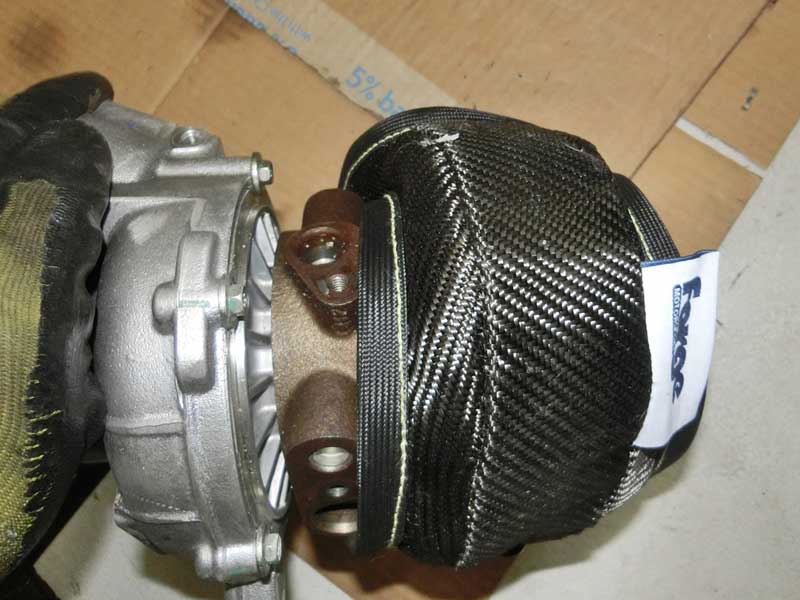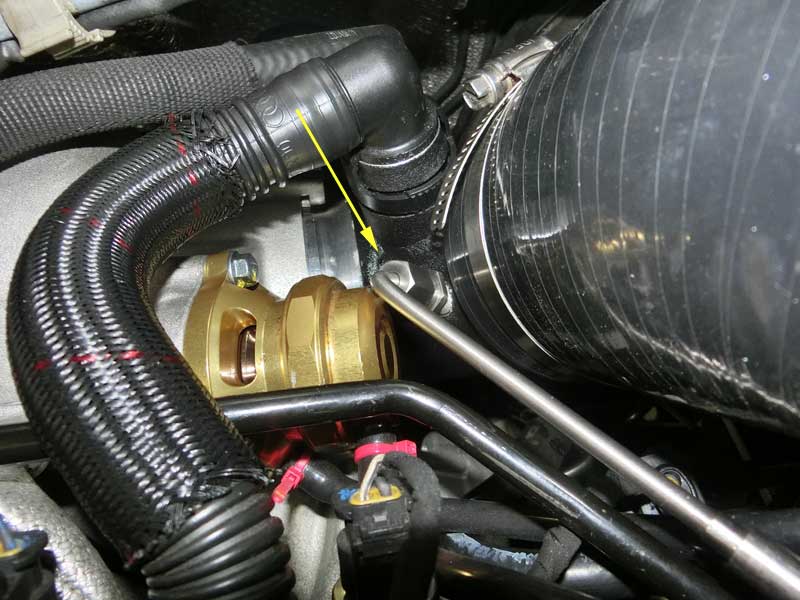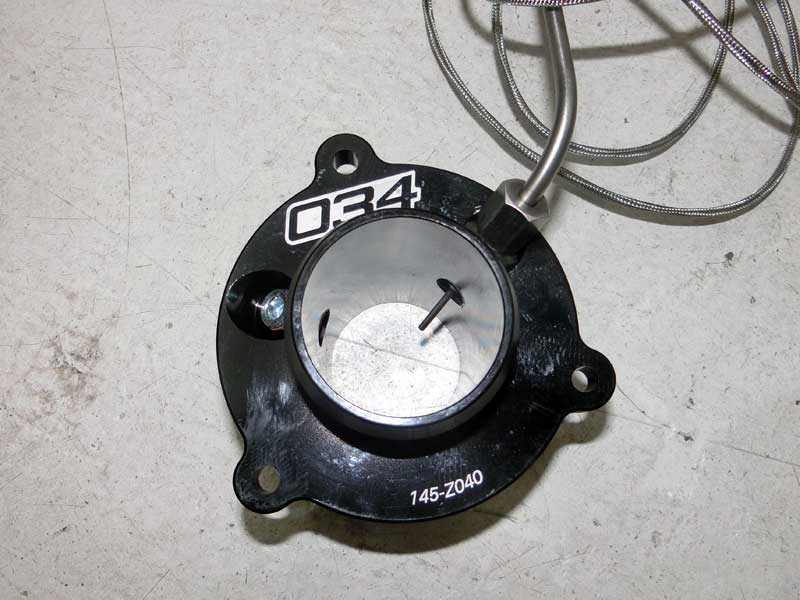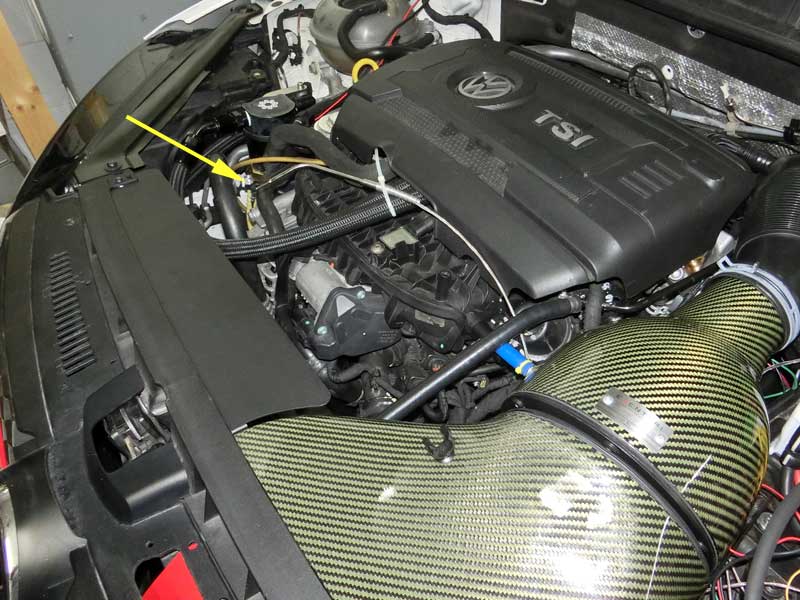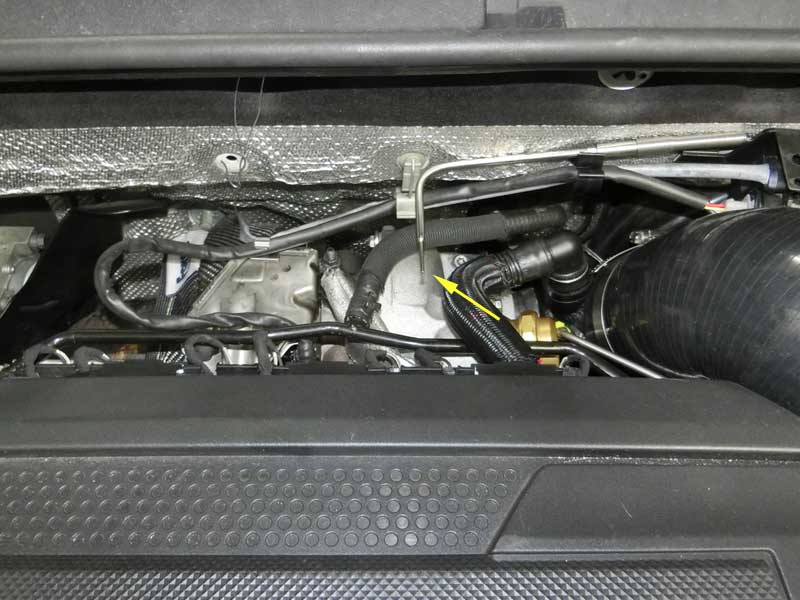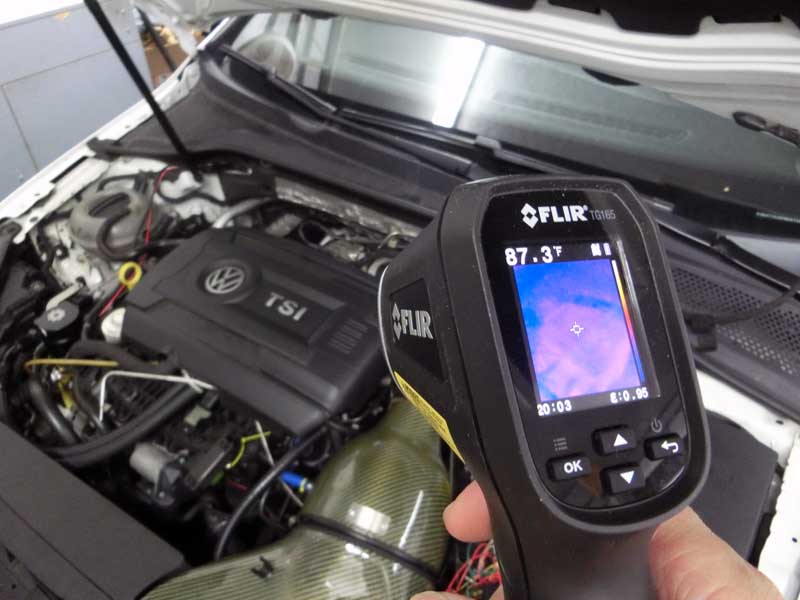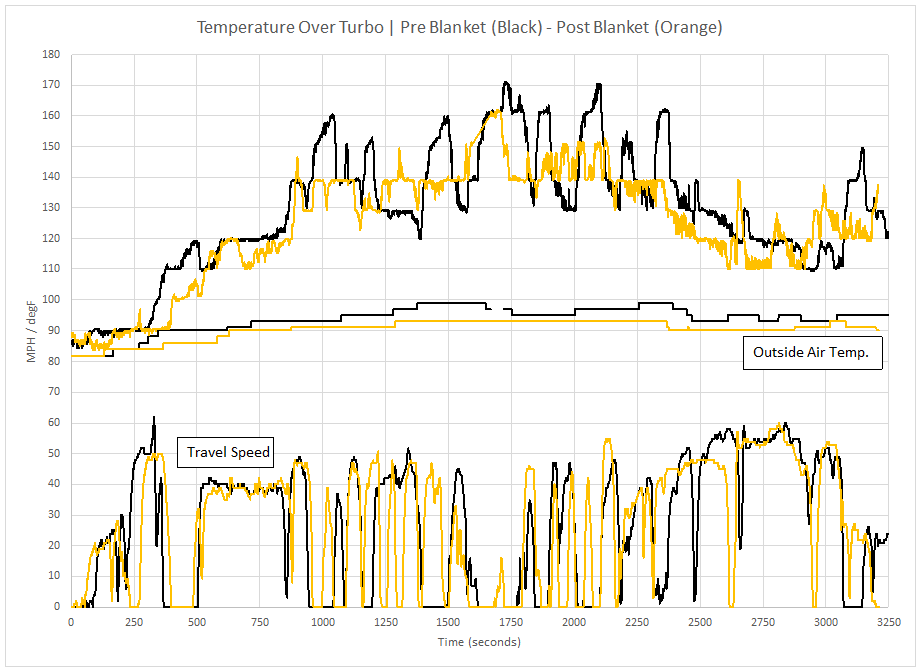1.0 Background
1.1 Summary
This test project is being undertaken to evaluate the performance impact of a turbo blanket on 1) engine compartment and air intake temperatures and 2) turbocharger boost onset when installed on an IS38+ turbocharger equipped VW Mk7 GTI.
1.2 Previous Test Results
- No previous testing has been performed on the Mk7 GTI by the test conductor.
- Other owners experiences are referenced later in the test plan.
- No vendor testing of the products considered for this test could be found.
- SAE journal articles on turbochargers tested outside of an engine compartment were found to show some performance benefits.
2.0 Purpose of Test
Determine if there are measurable differences in temperature and boost onset for a Mk7 GTI equipped with an IS38+ turbocharger following the installation of a turbocharger blanket.
3.0 Systems under test
3.1 Turbo blanket
The turbocharger blanket as the name suggests is a product that encases the turbocharger to reduce heat transfer from the turbo. The blanket is wrapped around the turbine housing, the source of the greatest heat in the turbocharger. The blanket is made of a high heat resistant material.
3.2 Test Item
Considered for this test were the following vendor products:
- Cobb turbo blanket
- CTS Turbo turbo blanket
- ECS Tuning turbo blanket
- Forge Motorsport turbo blanket
- PTP turbo blanket
- Thermal Zero turbo blanket
- Torque Solutions turbo blanket
An absence of performance data to use for comparison between products left the determination to be made by other criteria. Costs vary greatly among the products. The least costly is the Forge turbo blanket and this vendor’s product was selected to be used in this test.
3.3 Test Instrumentation
The GTI is equipped from the factory with temperature and pressure sensors that produce useful data to support this test. Additional data logging equipment is installed as shown below:
Air temperature is recorded after passing through the airbox and inlet hose by a sensor located inside the turbo inlet elbow.
Temperature at the turbocharger compressor outlet is measured using a sensor installed inside the turbocharger muffler, shown below:
Air temperature exiting the intercooler is measured by a sensor located inside the cold side charge pipe:
Temperature at the intake manifold and the ambient air temperature are recorded using the GTI vehicle sensors.
Boost pressure is recorded at the turbocharger compressor outlet by a pressure sensor located in the turbo muffler and the vehicle MAP sensor records pressure at the intake manifold.
Placed within the engine compartment are two temperature probes. One is near the oil filter housing in front if the intake manifold.
The other is located above the turbocharger compressor housing:
Note: Available but not used is a handheld thermal camera. The goal of this test is to evaluate the turbocharger blanket affect on performance when the GTI is in operation and the handheld device does not support that goal.
4.0 Scope of Turbo Blanket Test
4.1 Test Environment
Temperature and pressure will be measured along the engine air intake path and within the engine compartment of a Mk7 GTI. The vehicle will be operated with ambient temperature ranging between mid 70’s to mid 90’s.
4.2 Test and Test Conditions
- Boost onset – Full throttle acceleration in third gear from off-boost condition to boost pressure exceeding 20 psi.
- Typical driving – Operating the vehicle in normal operating situations and conditions.
4.3 Test Criteria
4.3.1 Assessment Standards
Success / Failure Criteria – The turbocharger blanket will be evaluated for performance differences compared to the vehicle when not equipped with the turbocharger blanket.
Charts showing before and after performance measure differences will be the main form of comparison.
4.3.2 Completion Criteria
Testing will conclude when sufficient data has been collected to remove uncertainty about the performance of the turbo blanket under the conditions of test.
4.4 Limitations to Scope
Limitations due to the operating conditions are the most significant limitation to the test. Other conditions may possibly produce different results. As an example, conditions encountered from extended high demand driving, such as at a track event, might produce different measurement values.
5.0 Method of Turbo Blanket Test
5.1 Test Method and Procedures
Testing will consist of measurement of engine compartment and air intake conditions and analysis of the recorded data. Additionally the turbocharger boost onset will be measured and evaluated
Additional details of the procedures used will be provided in the individual test session procedure write ups.
5.2 Support Requirements
There is no additional support required to carry out this test.
6.0 Project Management
6.1 Supplies
All testing equipment, the test vehicle, and the product under test are supplied by the test conductor.
6.2 Reports
6.2.1 Product Test Results
Links to individual test results will be made in this section of the test plan.
Turbo Boost Onset Temperatures
Turbocharger Blanket Long Drive Test
6.2.2 Test Result Summary
Summary charts of the data analysis will be located in this section of the test plan.
7.0 References
7.1 Supplier Claimed Benefits:
- Faster boost onset / Reduce turbo lag
- Peak torque earlier
- Lower underhood temperatures
- Limits heat soak of nearby components
- Lower intake air temperatures
7.2 User Claimed Benefits:
- Huge difference lowering IAT when stationary or stop & go driving. (Mk7forum)
- Engine bay heat mitigation unbelievable. (Mk7Forum)
- IAT in traffic is lower initially with blanket. IATs go up slower and drop faster with blanket (Mk7forum)
- Under hood temps are for sure cooler with the blanket on. (Mk7forum)
- Turbo spools quicker (Mk7forum)
- DSG shifts much smoother (Mk7forum)
- No hot air out of interior vents after parked a while (Mk7forum)
- looks like the turbo blanket has kept under hood temps down a little bit (VW Vortex – nice write up!)
7.3 Related Research
- Univ. of Texas study (Link)

